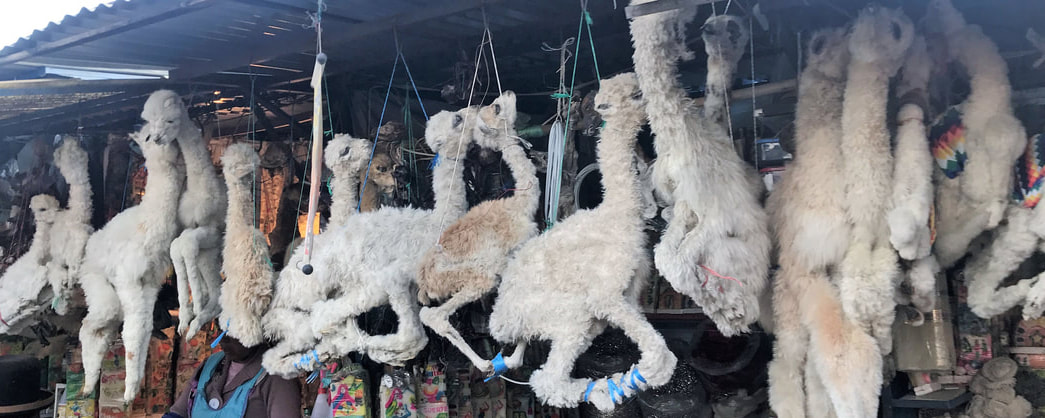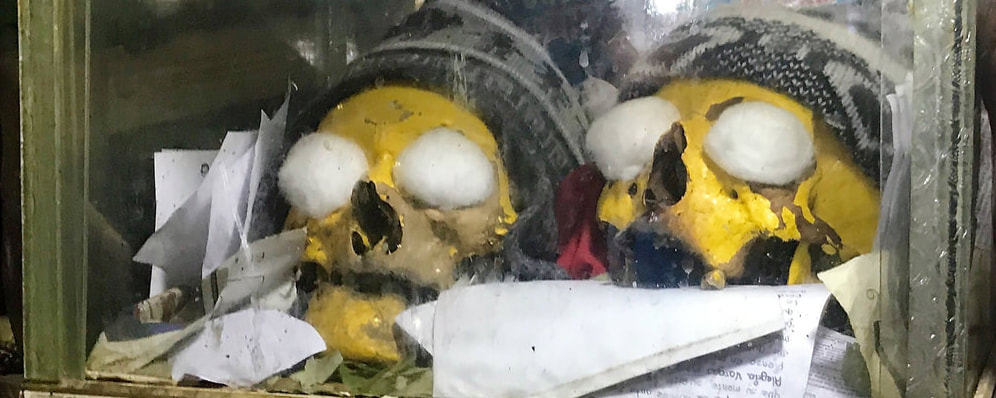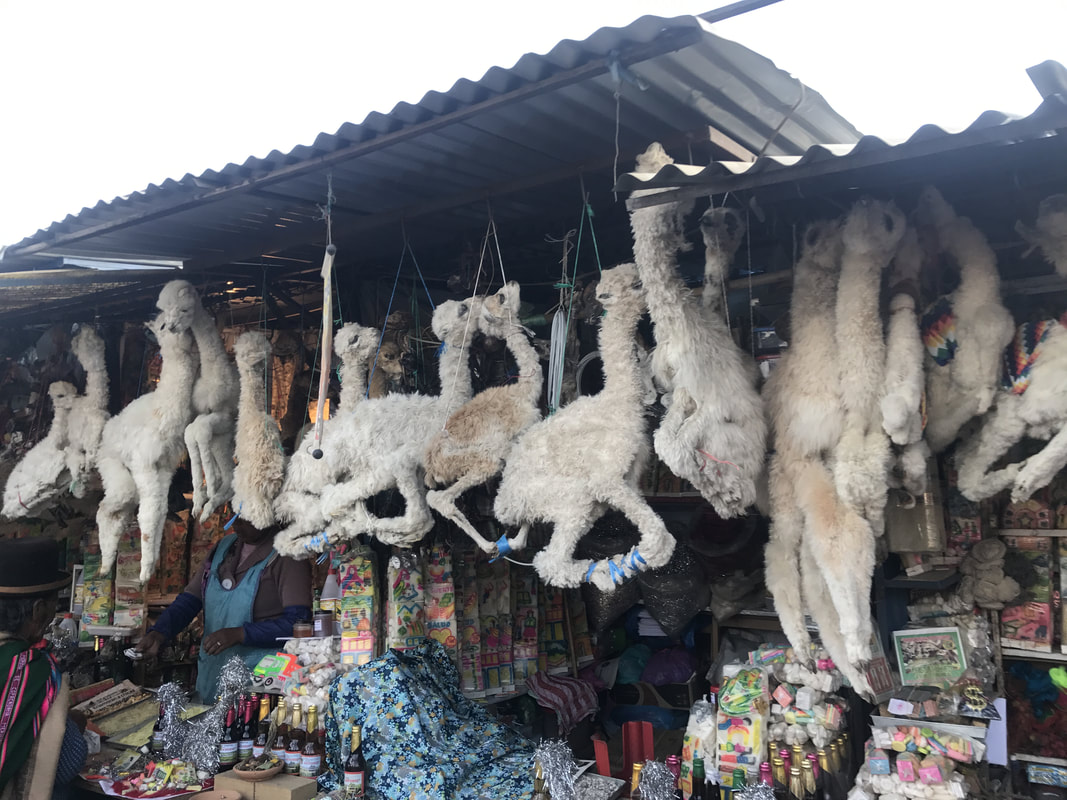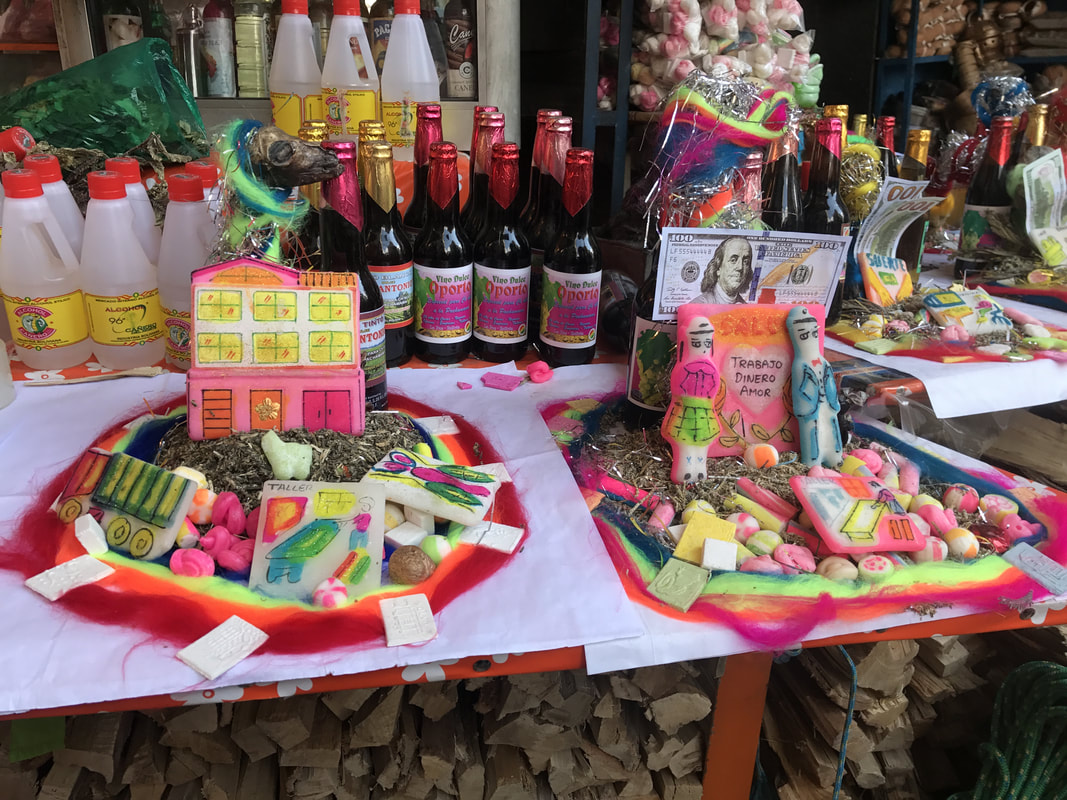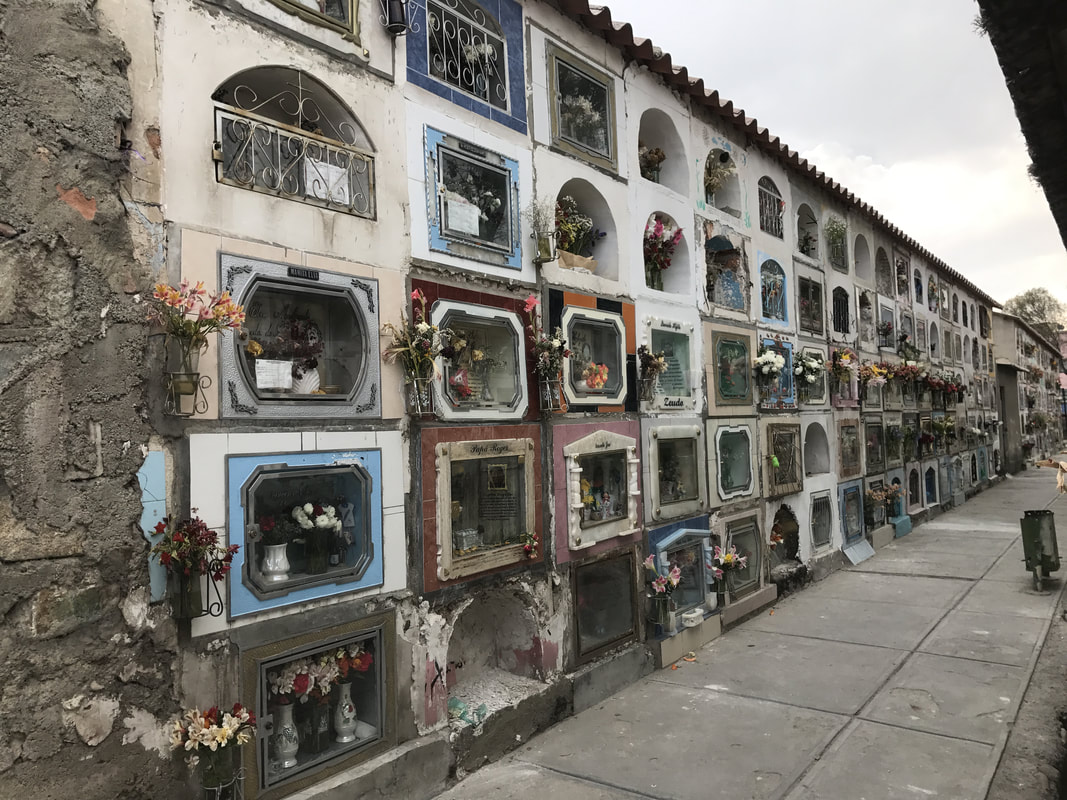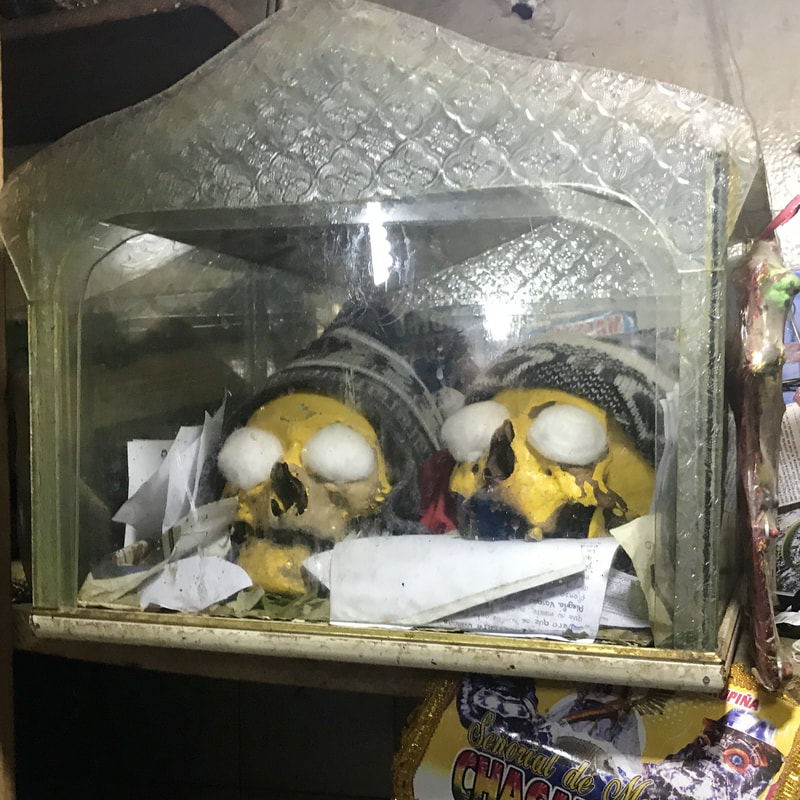|
Ever wondered where you can find mummified llamas, witch doctors, and skulls that protect you from evil? Yeah, me either. But, Bolivia is now one of my favorite countries. It’s so interesting and so beautiful, and you absolutely must make the trip! See my blog post on the Bolivian Salt Flats for the beautiful part, but La Paz was the interesting part to me. Our experience didn’t start off exactly great. Crossing the border by land from Peru was worrying and took 2 hours of running back over the border to Peru and waiting in various lines. See my separate blog post here on border crossing from Cusco. This experience was outweighed by all the amazing things we experienced in Bolivia though. We were only in La Paz for a couple of days, so we did 2 walking tours with Red Cap to learn the most out of the city. The first one we did was the extended city tour with Cholita wrestling included (US $26, but without the wrestling, it’s US $17), and the second one we did was a basic city walking tour (US $3). The city tours (both the extended and basic) were amazing. On the extended tour, we learned about Pachamama, walked through a huge market area, went to the public cemetery, saw the witch doctors, saw Cholitas wrestle WWF style, and took the cable cars / gondolas / whatever you want to call them on the extended tour. I don’t suggest going to the Cholita wrestling, but sometimes you just need to follow the “when in Rome” philosophy. See more about this and a link to our video further below. On the basic tour, we learned a lot about the city (including the prison which I will explain below) and the government among several other things. I suggest doing both of the tours to get a more complete view of the city. Pachamama: Bolivians believe heavily in Pachamama. I’m not sure whether to call it “spiritual” but I guess in a way, that’s what it is. Pachamama is mother earth, and every tour guide we had talked about Pachamama. Even if a Bolivian is Catholic, they still want to please Pachamama. This is, of course, a generalization, but from the tours we had in La Paz as well as the Salt Flats tour, Pachamama is still very prevalent in all of Bolivia. Markets: In most of the markets, you’ll find mummified baby llamas or mummified llama fetuses. These are used for good luck. The bigger the llama mummy, the better your luck. Now, we were told that none of these are healthy llamas that were killed. They were sick or died on their own before they were mummified. I believe this because the llamas are a gift from Pachamama for their livelihood, and if they were to kill one, it would be offensive to Pachamama. One example of how the mummified llamas are used is if you are doing construction. If you are building a house or really any kind of building, you need to bury a llama mummy in the land you’re building on first to please Pachamama. Even if you are a Bolivian that doesn’t really believe in this tradition, you may still do it just in case or at the very least, your construction team will to keep them safe during the building process. You’ll also find several other items for good luck like potions and different types of candies representing things like money, houses, health, etc. that you burn to help you with whatever you need. Cemetery: The public cemetery in La Paz is mostly above ground. Instead of leaving flowers and other trinkets on the ground by the gravestone, they leave items in a little window in front of the deceased’s spot in the wall: Sometimes, they keep the skulls of their loved ones. If you have a skull, it’s called a ñatita. And it’s not always a loved one. You can have a skull from a stranger that is obtained from a medical school or old cemetery if the stranger revealed their identity in a dream to the future owner of their skull. The living keep the ñatitas happy giving them what they ask for so that the ñatita will protect them and also bring good luck – sometimes it’s cigarettes if they like to smoke; sometimes it’s money; sometimes it’s a hat for the cold: Witch doctors:
There are at least 100 witch doctors on the street that we visited. Their little shacks stretch for as far as you can see. We even visited one with our guide (the photo of the skulls above were his ñatitas), and I had my fortune told with coca leaves (with the help of the guide for translation). He told me that I should have a career in commerce. He also told me that Colin is going to leave me, so that was bad news, but I’m sure that something was lost in translation, sooooo… Cholita wrestling: The best way to explain this is simply with a video: See our video here for an example of what you’ll see at a Cholita wrestling match. In short, it is women dressed in traditional clothing (long skirts, long braids, etc.) wrestling WWF style. There are also men that come out to wrestle sometimes. As I mentioned above, I don’t suggest including this in your tour. It’s extremely touristy which makes me feel very awkward. There were very, very few Bolivians there, and it was nearly all tourists. It just felt… weird that we were all there to watch this act (because WWF wrestling is an act). It is similar to lucha libre wrestling that you would see in Mexico, but when we went in Mexico City, the crowd was mostly Mexicans that were really in to the sport. It was less awkward because it felt like a cultural event instead of something that is put on specifically for gringos. Some people did seem to enjoy it though, so maybe that’d be you too. Make up your mind after watching the video. It’s also only an hour of awkwardness during the wrestling, but it does take about an hour to get there and back because of traffic. Prison: The prisoners all have to pay for everything they have in the prison. This is such a different idea than the USA where taxpayers pay for prisons. If the prisoner is wealthy, they can afford a nice room (maybe even a hot tub). The prison has turned into a mini-marketplace where you can buy whatever you need inside. This includes cocaine. The prisoners’ wives and kids live with them in the prison but are free to come and go as they please, so they can smuggle anything inside to the prisoners. If you are a tourist, you can pay for an illegal tour of the prison. Your “guide” will bribe a guard to get inside, and you can go to the parties. I don’t suggest doing this just to be clear. I heard stories about the “guide” disappearing during the tour. This means that you can’t get out of the prison. You’d then have to call your embassy to figure it out or bribe a guard (maybe $400) to get out. You could spend days in the prison with gang members and dangerous prisoners before getting out. Visiting Bolivia: If you visit Bolivia, fly into La Paz where I suggest at least 3 days in La Paz (possibly more, but if you don’t have a lot of vacation, you can scratch the surface with the Red Cap tours); then take an overnight bus to Uyuni for a 3 day tour of the Salt Flats (blog post on that here); and then take another overnight bus back to La Paz to fly out. Check out our photos from Bolivia here!
1 Comment
Krystin
8/31/2017 07:29:00 am
Very interesting! Love hearing other countries traditions and their way of living. I had never heard of any of these sorts of things before so thanks for sharing!
Reply
Leave a Reply. |
About MeHi, I'm Sara Monica Patton. I love animals, traveling, and eating. Read more about me in my first blog post here. Categories
All
Archives
May 2021
|
